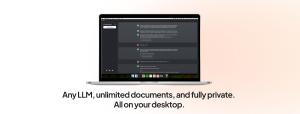Every business aims to successfully position their brand in search engine results. The most efficient way to generate leads and attract more prospects to your website is to define and successfully integrate marketing goals. It is more than obvious that without the right SEO strategy implementation your efforts to drive organic traffic, raise brand awareness, increase visibility and sales will result unsuccessful. In this article, you will find some key points on how to optimize your business website content for SEO.
Keywords Research
A proper search engine optimization process involves complex strategies in order to significantly increase organic traffic to a website. The most effective way to a great campaign is the right keyword research, which is considered to be the foundation of SEO. It functions as an orientation point to help you understand the requirements of your target market, as well as keep track of your progress. But the question is: How to do a smart keyword research?
To increase your chances of success you have to figure out the interest for a given word, and the effort required to achieve high rankings. First of all, you have to identify the language that your customers use to find your products or services. Also, an assessment of the existing keyword rankings on search engines will help you create a strategy to intelligently use them to make Google prioritize yours. When you create your content, make sure to include related words to your main keywords to show search engines and your target audience that you offer valuable and accurate information. In addition to this, avoid using keywords that have broad and great competition.
Quality Content
Great content is one of the most important aspects of online marketing and the main tool to actually bring and maintain the audience. People are interested in high-quality and valuable information, so make sure yours is unique and offers different perspectives comparing to your competitors. The website must contain a useful description of your activity, products or services. When you build your site you should primarily think about the users that are going to interact with it, not only for search engines. To create high-quality and credible content you have to know your audience and their needs. With usable and interesting information you will encourage customers to come back, thus enhancing brand engagement, website authority and sales conversion.
Title tags and Meta descriptions
Title tag is the clickable blue link that is shown in the search engine result pages, which is actually the title of a web page. The optimal title tag length should consist of 50-60 characters to be properly and completely displayed on SERP. Through meta title tags you make the first impression to your audience and influence their decision to visit your website. If structured wisely with the right keywords, this element can increase your click-through rates.
On the other hand, Meta description is the summarized content of a webpage that appears under the blue clickable link in the search engines result pages. Its optimal length is preferable to be 160 characters long. A compelling meta description content with important keywords draws visitors to the website and it functions like an advertiser which definitely improves your SEO and generates more leads.
Images
The fact that marketing is essential for a successful outcome is already well-known. People are eager to be informed of what you have to provide and why they should choose your service or product. If you have a business website, besides high-quality and accurate information, you should consider using images so that your customers can see what they are being offered. However, marketers should be very careful on the way they add images to their websites. They can have a great contribution to SEO and conversion if properly optimized. When adding featured images to your page and you want to optimize them for search engines, focus on:
- Image Name – optimize your file name with the right descriptive keywords.
- Size and Dimensions – use right dimensions for faster loading and responsive images to provide a great user experience.
- Captions – add captions with interesting and compelling content to increase engagement of potential readers.
- Alt text – in case pictures are not displayed due to different reasons, make sure your alt text gives the intended message.







